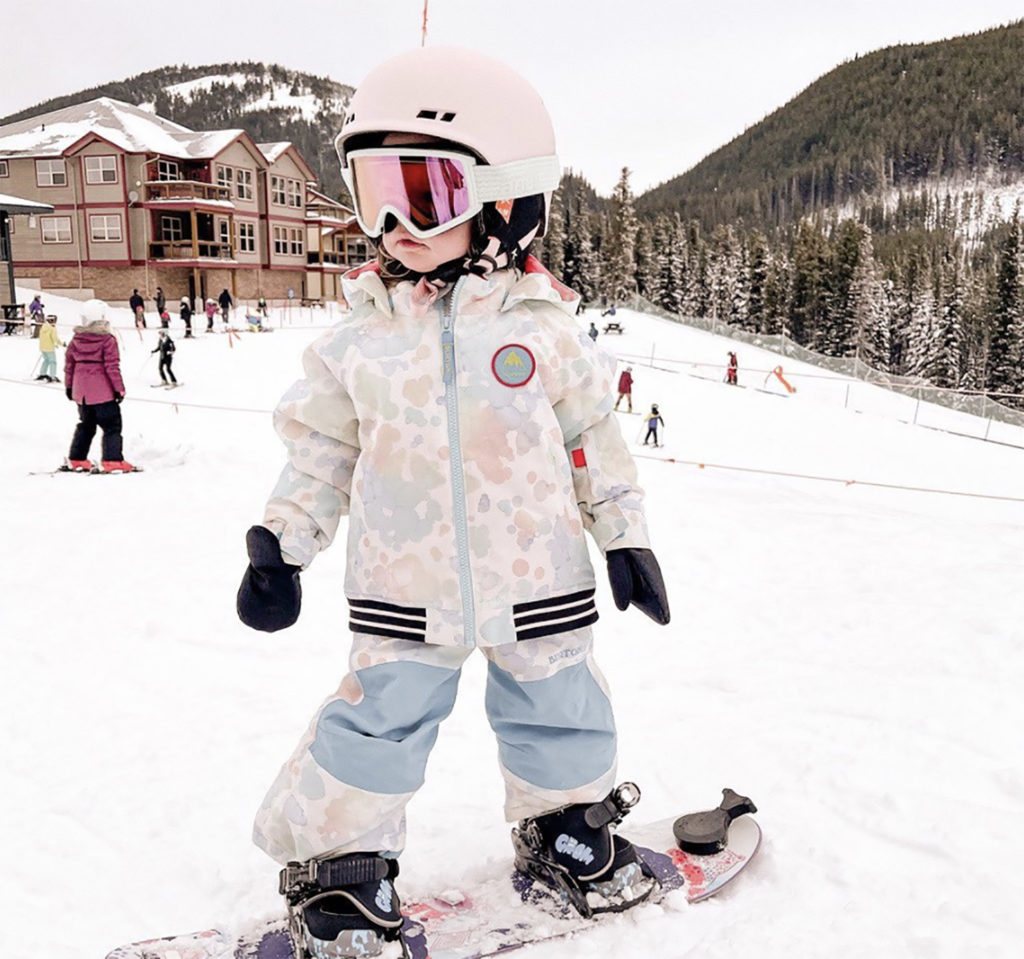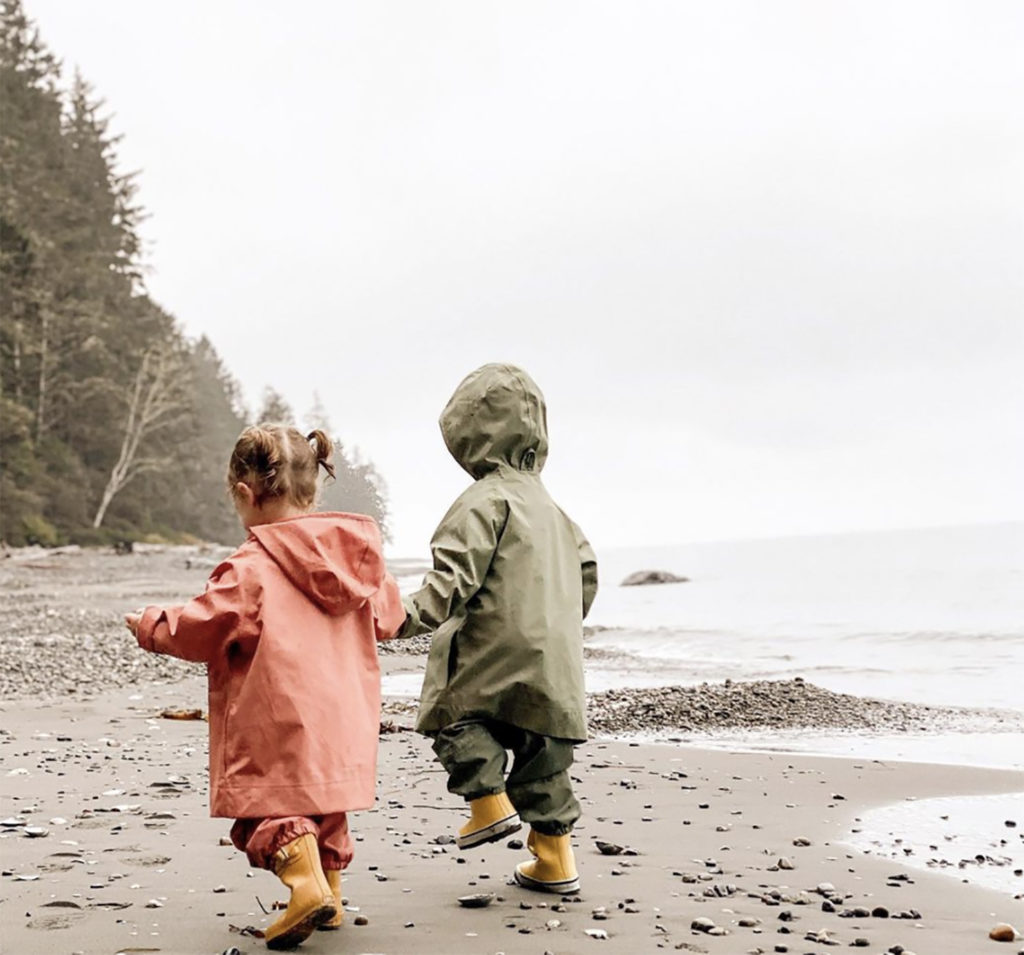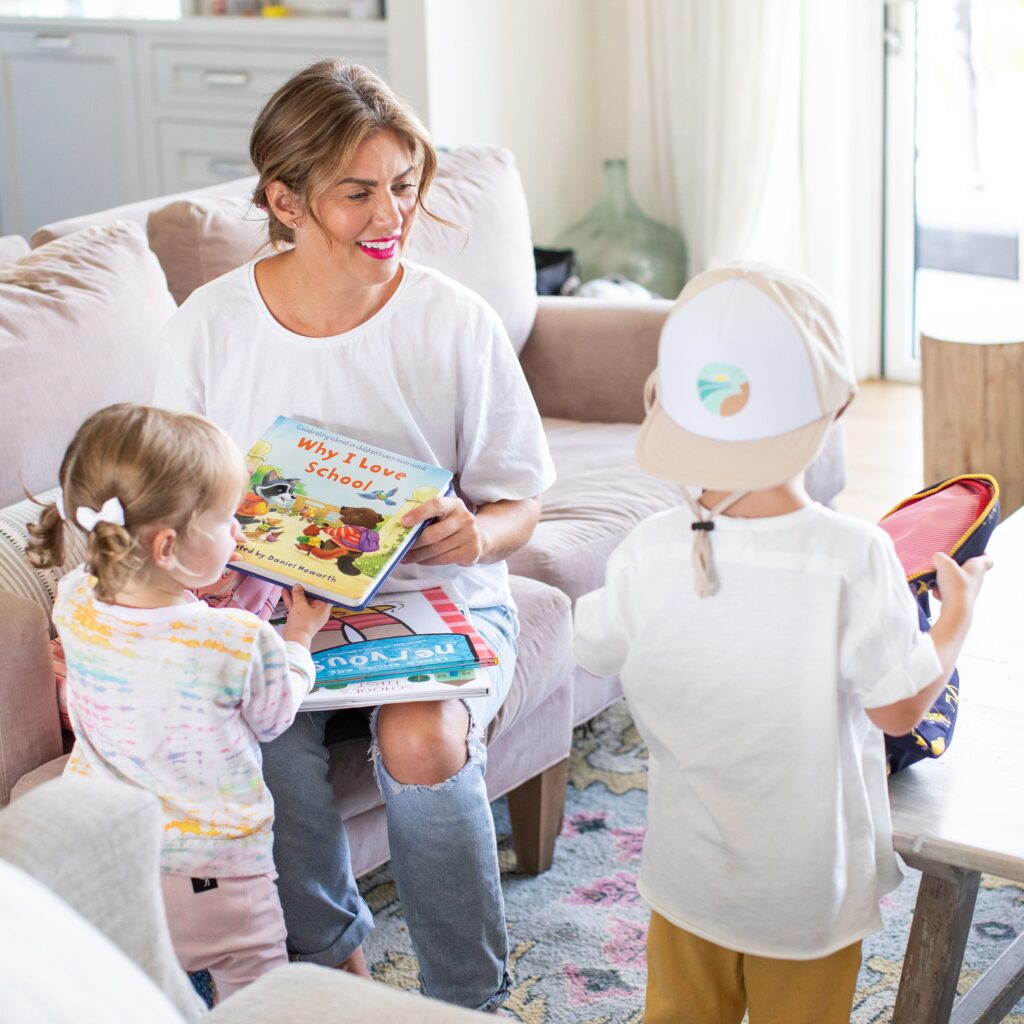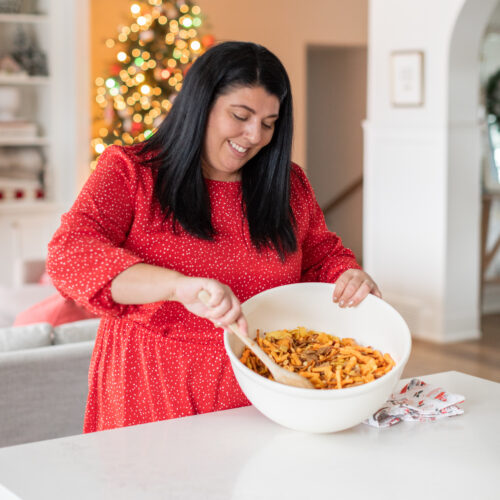Hi everyone!! I am SO excited to welcome back Melissa Pasutto, Justin’s mom, to the blog to talk with you about the principles of raising kind children. Melissa is a super mama herself, she raised two amazing boys (I may be biased 😉), has 32 years of experience as an elementary school teacher, and the recipient of a few prestigious awards. Watching her spend time with Leo and Annie, teaching them so many valuables lessons on being kind to others, simply warms my heart. And with so many years of teaching children, to say she has a knack for raising kind humans is an understatement and today she is sharing all of her tips! If you missed her first blog post on developing routines for kids, check it out here!
Take it away, Melissa!
February is the month of love and the opportunity to fulfil many simple acts of kindness. Raising a kind child sounds natural and easy but is it? What if kindness could be a natural go-to behaviour? Not just for the month of February, but a day to day, hour to hour, minute to minute kind of thing? Does this sound unrealistic or attainable for you?
Let’s begin with some “what if’s”
What if each big and little human woke up first thing in the morning and after saying, “Thanks be to God” (because you woke up) (never take that for granted, my mother would say) we all had the presence of mind to reflect on how we were going to bring kindness into our lives that day. What if, we were able, every moment of the day, to reflect on how we could be kind to the people we would be encountering that day. Is this an attitude we could teach our children? What if we could speak and greet our beloved family members the way we speak to our pets? With unconditional love and kindness?
The key to making these ‘what if’s” a reality, are the words ‘being in the moment’ because they require us to be present. Being aware and being mindful are necessary requirements to actually think about being kind on a daily basis. Kindness takes practice for adults and children. It’s like a muscle that needs exercise. I believe we need to train our brains to think and ask ourselves on a daily basis, what can I do today to help someone? Or, what can I do today that would be an act of kindness for someone else?
We may not actually realize that by helping others, it actually gives us a sense of gratitude, an inner peace. It’s a win-win situation, creating endorphins and serotonin in our brains, ultimately promoting positive feelings like pleasure, happiness, and love. Acts of kindness have a positive happy effect on the recipient but also on you, the provider. Helping others increases personal self-esteem, this is why we need to learn to be kind. Yes, learn! Shocking but true. You expect being kind is something automatic, that you do naturally, but you get busy with your day, and your focus changes. We get distracted, it’s called seeing butterflies. I believe being kind is a mindset and attitude that you can instill in your child.

So how can I raise a kind child you ask?
Here’s what I have learned and know to be true to me. Growing up as a child I was always told that kindness comes from the heart and when you do something kind you should expect nothing in return, your reward will be given to you in heaven. As an educator I would help the children in my classroom understand the concept of kindness by getting them to envision an imaginary gold crown on their head, that needed to be adorned with jewels and gems. Jewels such as diamonds, sapphires, emeralds, and rubies. The only way to adorn their crown, was through simple acts of kindness. With each act of kindness, one pretend jewel would be put on their crown. The more acts of kindness that one did, the more brilliant their crown became.
This leads into the perfect opportunity to talk to children about the Golden Rule “treating others the way they would like to be treated”. Following the Golden Rule is pretty universal whether you are religious or not, it’s just about humanity, our commonness. Kindness provides a sense of hope in humanity. The children in my class loved this image of the crown, imagining their crown and how heavy it would get on their heads if they did acts of kindness every day. We even cut out and made crowns out of poster paper with their crowns being adorned with little coloured plastic jewels or different shapes of coloured tissue paper that was added with each act of kindness they displayed. They were excited about this activity as the crown became a visual connection point between what are simple acts of kindness and what the impact of kind deeds has on others. They wore these crowns with pride, excitement and happiness demonstrating all the good they did. This grew from a a class activity to an activity for the entire school. Seeing all 500 students wearing their act of kindness crowns was a memory I will always remember. A teacher has the power to create a culture of kindness in the classroom, but a culture of kindness needs to be created in our homes as well.
Creating a culture of kindness in your home begins with identifying what kindness means to you and your family. Is it compassion, empathy, generosity, or all of these combined? Nurturing all of these attributes foster’s kindness. If this is not what is happening in your home right now, don’t worry, and do not be discouraged. Anytime is a good time to press the restart button. Children are resilient and right now there’s no time like the present to introduce and support acts of kindness. These can be “small things with great love”.

Here are some suggestions for creating a climate of kindness in your home in order to help you raise a kind child.
1. Children need to understand what kindness means, this is a great opportunity to teach the golden rule which, as mentioned, is to treat others the way they would hope to be treated. Practice being compassionate in your family, model forgiveness and teach them how to apologize as this creates a habit of behaving kindly. Ask your son or daughter questions like how would you feel if this or that would happen to you. This is to get them to think about how they would feel being in the shoes of the other person.
Model kind behaviour and empathy. Your children watch how you treat others, they see your acts of kindness, they hear when you say thank you or when you comfort others, they see you give money to the poor or how you donate your time, but most of all they see how you are to each other.
2. One of the easiest ways that I used to teach kindness in the classroom, was to read books about empathy, caring and kindness to my students. One of my favorite books and one I own personally, is the book titled How Full is your Bucket? This is a must have book, teaches your child that we all have an imaginary bucket that we carry around with us each day that needs to be filled with love. The way to fill each other’s bucket is through acts of kindness. This book also teaches your child how their affections and actions affect other. These concepts teach the importance of kindness, compassion and empathy to children. These are concepts that can be practiced every day in their life.
3. Another suggestion is to identify and verbalize emotions as they happen in your day-to-day routines. Listen to how you talk to your child. Do you like the way it sounds? Is your conversation with your child, loving, supportive, encouraging, and reassuring? Or is your conversation with your child, taunting, degrading or maybe just innocent teasing (which can actually be a form of bullying). Ask yourself, would you like someone to speak to you that way?
Use kind and inclusive words and recognize, verbalize and emphasize when others are being kind to them, so they learn to recognize the act of kindness. Allowing emotions to be verbalized is critical.’
Particularly crying. Let’s talk about crying, why? Because allowing kids to cry, is critical. Crying and allow your child to cry fits into raising a kind child. Crying is the body‘s natural way of releasing stress, if you don’t let your child cry, how do they actually release their stress instead of burying their emotions (which boys do especially,) what if we help them have their emotions, share their emotions in a safe way and sit with them through those emotions. Emotions that aren’t released can get acted out in unpleasant ways. Allowing the emotions and giving the permission to do so, is what fully releases them. Children whom learn to name their feelings are able to reflect on their own feelings, talk about them, figure out how to deal with them, recognize the feelings in others and empathize! Empathy is needed to build kindness. These children can then tolerate frustration better, are more resilient, and study show, they get into fewer fights, meaning they are less confrontational. Children who are allowed to express their emotions freely in a safe environment, are emotionally healthier, less lonely, less impulsive and more focused, thus achieving more academically. This also makes for a kind child.
4.Once your child knows what the meaning of compassion, empathy, and kindness mean, then you can start to help them make a difference in their home. This might be as simple as them helping with chores, working on their manners, using words like “ Is there anything I can do to help you today?” or what my friend Lisa has taught her girls to ask is “Do you have a job for me?” Just simply learning to mention themselves last, instead of first, or showing in some small way that they care about their siblings. Teach your child about the joy of helping others, include them in acts of service and with each act of kindness a jewel is placed in their imaginary crown.

Once children know and understand the concept of kindness, empathy and compassion, they can begin to make a difference in their community. If they can offer empathy and kindness in your home then they’re ready to offer the same to the community. Many of you are probably already encouraging your children to participate in acts of kindness, like donating the clothes they have outgrown, or donating the toys they don’t play with anymore to families in need. Maybe they bake cookies for Grandparents or loved ones, are making Valentine cards for family members or posters for our first responders. Dropping off extra food to the food bank is also another way that they can be involved in community service.
Of course, once they’ve made a difference in the community, then they’re ready to make a difference in the world. It’s a natural progression as they get older for them to want to make donations, help people raise money for a charity, or support a cause. The basic steps for raising a kind child begin with role modelling, teaching about empathy and compassion, reading and then putting it into action. Developing kindness and empathy in your child ends up empowering them with an understanding that they can make a difference in the world.
Kindness is giving your child what they need, love, praise, attention or time with them. They will watch you first so be kind to yourself, which means eating right, sleeping well, exercising, and having positive self-talk. Raising a kind child ultimately is about acts of kindness, gratitude and acts of service, which are all intertwined and lead your children to authentic happiness.
Until next time!
Melissa





Hi Melissa! I was a public school teacher for 16 years in Special Education and Transitional Kindergarten. I now own my own tutoring/educational advocacy center. You wrote SO MANY AMAZING ideas and tips for families! Thank you for sharing your thoughts and expertise! Have a blessed day! ~Angela Lange Iowa
I really enjoyed this article.It really spoke to my heart.I am a mother and grandmother myself.I’ve learned so much just from my daughter alone but this article has really hit home.It’s only been the last couple years that I have really learned how much the early years impact us in later years.While I am aware of my past I am doing my very best to just be better!It’s not always easy.Thank you .
Well this was a wonderful read. Thank you!
Great words of wisdom! They are excellent tips to keep around!
So much wisdom in this article. I absolutely loved it. I’m going to make my husband read it too. Thank you so much Melissa!
What a beautiful post — just so clear and written with love and intention. I love this and these suggestions have definitely made me do a little ‘reset’ myself. Thank you, Melissa.
As a parent of a SN child,, I read and enjoy these. I also wonder if as an educator you have suggestions to be more inclusive.
As an educator, I love this post, there are some great ideas here! As a parent, I’d love a post on age-appropriate books for cultivating kindness and developing empathy. 😉 I find purchasing story books for my toddler that much trickier when we aren’t getting out to shop for books or go to the library because of Covid.
Thank you so much for sharing this beautiful message…. packed with so much wisdom!! I love your example about the crown and plan to get the book you mentioned for my Grandchildren.
So much wisdom in Raising Kind Children.
What lucky children to have had Melissa as a teacher !!
Dear Melissa,
Oh my ! This was a wonderful read and so well timed with Valentine’s Day coming soon. I’m a fairly new Grandmother (14 months) and I will put your suggestions to work. Thank you so much for sharing this very warm and wonderful message.
Very best, Lori Pixley
Loved this. I also loved the crown idea will be trying that with my children as well as in our church. We really do need invest in kindness now more than ever.
I am a RECE in FDK. I love the crown of kindness idea!! I usually read “Have you filled a Bucket today?” Every child get a paper bucket and we spend a week trying to help fill each others buckets. The crown idea is perfect as they can walk around the school with them. This will encourage other students and teachers to ask questions were my kindergarteners can engage in conversations about being kind. I will be saving this idea for sure. Thank you Melissa Pasutto.